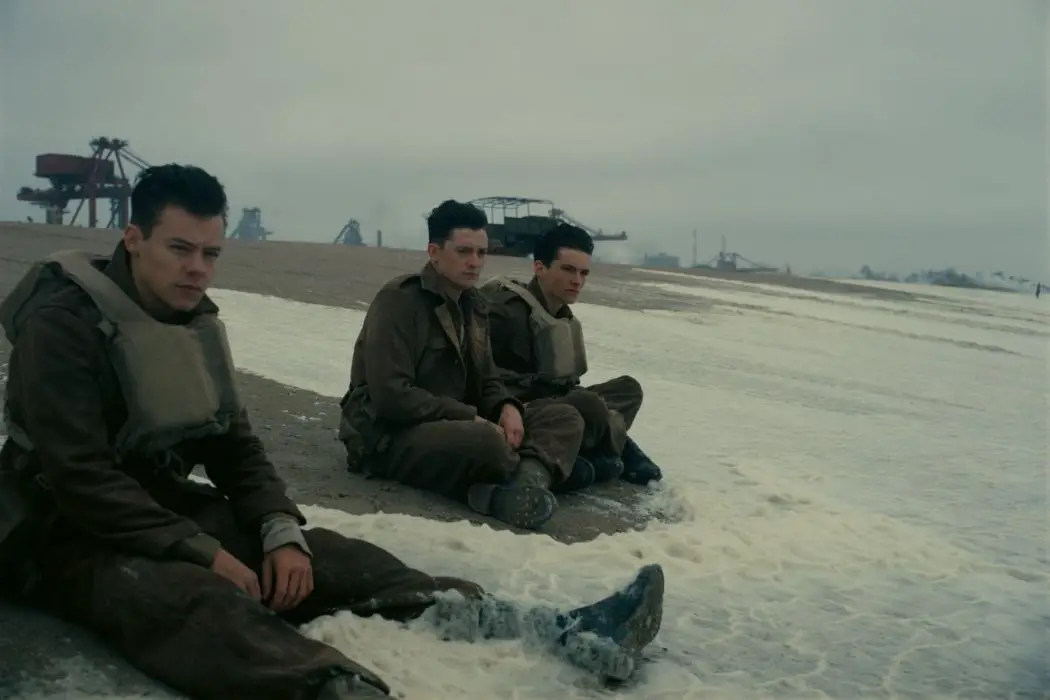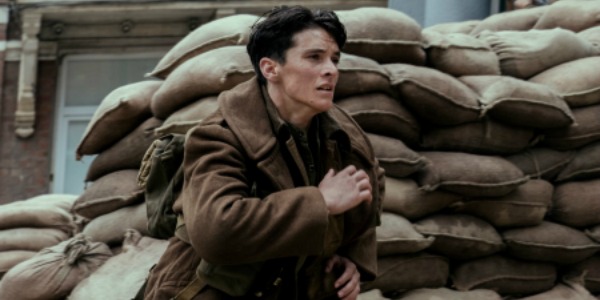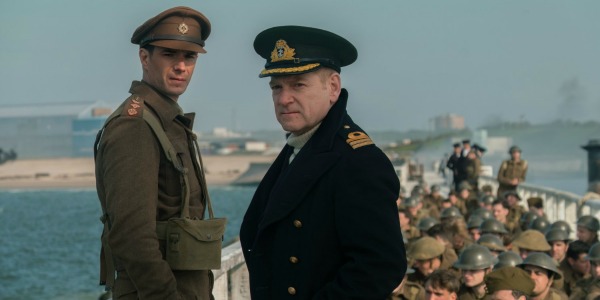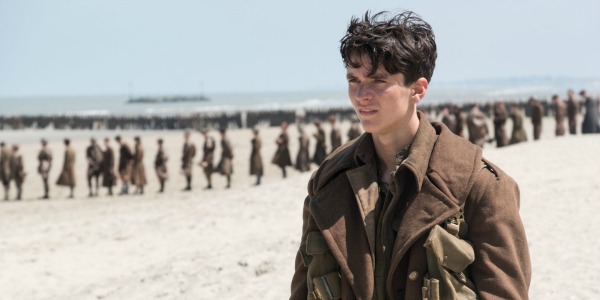DUNKIRK: Nolan’s Most Ambitious Film To Date

Alistair is a 25 year old writer based in Cambridge.…
The Dunkirk Evacuation has grown to become one of the most debated moments of the Second World War in Britain. Although viewed unanimously at the time as a failure, with Prime Minister Winston Churchill calling it a “colossal military disaster” that shouldn’t be attributed as a victory, many British politicians in the years that followed grew a pride in the country’s “Dunkirk Spirit”- the ability to stand strong when impossible odds are stacked in the country’s favour.
Any historian will tell you that Dunkirk was viewed as a disaster, yet its been oddly reappropriated as a victory in many quarters, and even something that helps shape the British national identity – it’s no surprise that right wing columnists and politicians in the UK are comparing the apparent “success” at evacuating Dunkirk without allied help as a comparison to the monumental task of leaving the European Union.
This line of thinking is thrown in the water by director Christopher Nolan’s terrific anti-war picture Dunkirk, which thankfully divorces itself from any political interpretations to bluntly show the horrors that unfolded, from three differing, yet equally stomach churning, perspectives. Nobody will proudly reminisce or wax lyrical about the evacuations after seeing this.
Forget everything you know about Christopher Nolan
Nolan’s reputation as a pragmatic humanist, a director who is often accused of being cold despite the blatant emotion inherent in his narratives, means that any jingoistic nationalism associated with the evacuations in some quarters is entirely absent. Instead, we have a bleak, intense film that frequently subverts the notion of what it truly means to be a patriot, mostly through visual, visceral storytelling that removes the expository, “mansplaining” dialogue he was parodied for consistently producing by many of his fiercest critics.

If Nolan has become an unfair source of parody following the divisive Dark Knight Rises and Interstellar (both of which this writer unashamedly loves, for the record), by stripping away the dialogue and focusing on the intensity of war through visual story telling alone, he’s served a reminder that he is one of this century’s leading directors of blockbuster spectacle – all with a formal inventiveness no other director would be given the free reign to create by a major studio.
Nolan’s reputation for mind-bending narratives is surprisingly well served by the structure of this triptych. Here, we spend a week in the lives of soldiers being evacuated from Dunkirk beach (led by quietly impressive newcomer Fionn Whitehead, whose silently mortified glare depicts the horror of being a soldier with a subtlety unaccustomed to the surrounding blockbuster spectacle) the day leading up to the evacuations on a private boat that has agreed to help the navy with rescuing soldiers (led by a typically brilliant Mark Rylance), and the hour before the mass evacuations in the air, where three spitfire pilots (led by Tom Hardy) encounter a Luftwaffe plane.

Despite the differences in time as these separate narratives unfold, Nolan frequently cuts between the three – an ingenious move that actually helps to build tension, as elements from the disparate narrative strands start increasingly bleeding into one another, leading to a relentless sense of dread. We know the outcome of the Dunkirk evacuations, yet here, Nolan has devised a structure plotted so meticulously, it manages to leave you on the edge of the seat and breathe new life in to the stale WWII movie formula in a manner that feels effortless to this master director.
Despite the presence of many recognisable faces in the ensemble, with stellar performances from supporting performers including Cillian Murphy, Kenneth Brannagh and an effective debut performance from pop star Harry Styles, they are all overshadowed by Nolan’s directorial ambition, which prioritises realism over dialogue and character development.
He has cited Mad Max: Fury Road as a major influence, due to how the story was told through action, keeping dialogue to a strict, bare bones minimum. Although the narrative strand set at sea does include moving character moments and believable development, the scenes of battle on land and in air are driven forward by the foreboding sense of dread.
Blockbuster thrills that will give you PTSD
It’s so foreboding, in fact, that when the soldiers do start speaking with each other, it’s defined by a xenophobic paranoia that renders each and every one of them untrustworthy to the other, and although Nolan’s film is generally anti-war and divorced from any political implications, this fact could easily be interpreted as a criticism of the current wave of populist nationalism, even if the film has been 25 years in the making.
Nolan’s streamlined approach to storytelling shows the events viewed entirely through the eyes of soldiers, who only see Nazis (simply labelled “the enemy” in order to simplify what is already universally known) as existential forces of doom swooping through the air, the high pitched wailing of their advancing aircraft sounding every bit as fear mongering as the iconic scores for Psycho or Jaws.
If he’s been frequently criticised for favouring dialogue that over-explains the plot, here Nolan explains nothing; we’re thrown into a hellish situation, with only the most basic information, and it feels scarily unpredictable, despite the events being well known to every audience member.
It’s the fact these events are well known that has presumably led to the less restrictive PG-13/12A ratings on both sides of the Atlantic, as even without a fixation on gory detail, this is a visceral, disturbing film, and probably the closest a studio tentpole will ever get to replicating the anxiety-inducing despair of Elem Klimov’s Come and See, a film which succeeded in enveloping the audience in the nightmarish PTSD of its young lead character.

This may sound relentlessly bleak, but as a work of cinematic spectacle, Nolan’s ambition is worth seeing on the big screen, and will definitely make you overjoyed that this kind of expensive, ambitious filmmaking can still be produced by a major studio. I was fortunate enough to see the film projected in 70mm (I haven’t yet made the pilgrimage to see it in the intended format, IMAX 70mm), and I was left completely spellbound, despite the format being commonly associated with sweeping epics like Lawrence of Arabia, here Nolan’s camera frequently moves in to claustrophobic spaces, using the widescreen nature of the format to envelop us in the perilous situation, leaving the audience as hopeless at survival as the characters onscreen.
Equal credit should also go to Hans Zimmer, whose score (in particular the recurring motif of the ticking clock) only adds to the overall feeling of dread. He apparently made the unusual move of writing the score before the film started shooting, and you definitely feel that Nolan timed many of the most powerful sequences to fit the most heart pounding moments of the score.
Dunkirk: Conclusion
Dunkirk isn’t a typical Hollywood blockbuster, let alone a typical mainstream war film. It is deeply ambiguous and divorced from politics, leaving the audience with the same desperation as the characters onscreen. You won’t want to sign up to the army after watching this tale of heroism in a state of existential crisis, but you will definitely want to head back to the cinema again, as Nolan has revitalised his approach to filmmaking, and the results are nothing less than awe inspiring.
What are the best anti-war films of all time?
Dunkirk is out now in the UK and US. All international release dates are here.
Does content like this matter to you?
Become a Member and support film journalism. Unlock access to all of Film Inquiry`s great articles. Join a community of like-minded readers who are passionate about cinema - get access to our private members Network, give back to independent filmmakers, and more.
Alistair is a 25 year old writer based in Cambridge. He has been writing about film since the start of 2014, and in addition to Film Inquiry, regularly contributes to Gay Essential and The Digital Fix, with additional bylines in Film Stories, the BFI and Vague Visages. Because of his work for Film Inquiry, he is a recognised member of GALECA, the Gay & Lesbian Entertainment Critics' Association.













